New York City on a Budget: Free or cheap things to do
A lot of sights and activities are expensive in New York City. Nevertheless, you can entertain yourself well on very little money if you know where to go. Here are some tips for seeing New York City on a budget. (Note: I thoroughly fact-checked and updated this post on February 19, 2023.)
A disclosure: this post contains affiliate links. If you buy through one of the links I will receive a small commission. This will not affect your price.
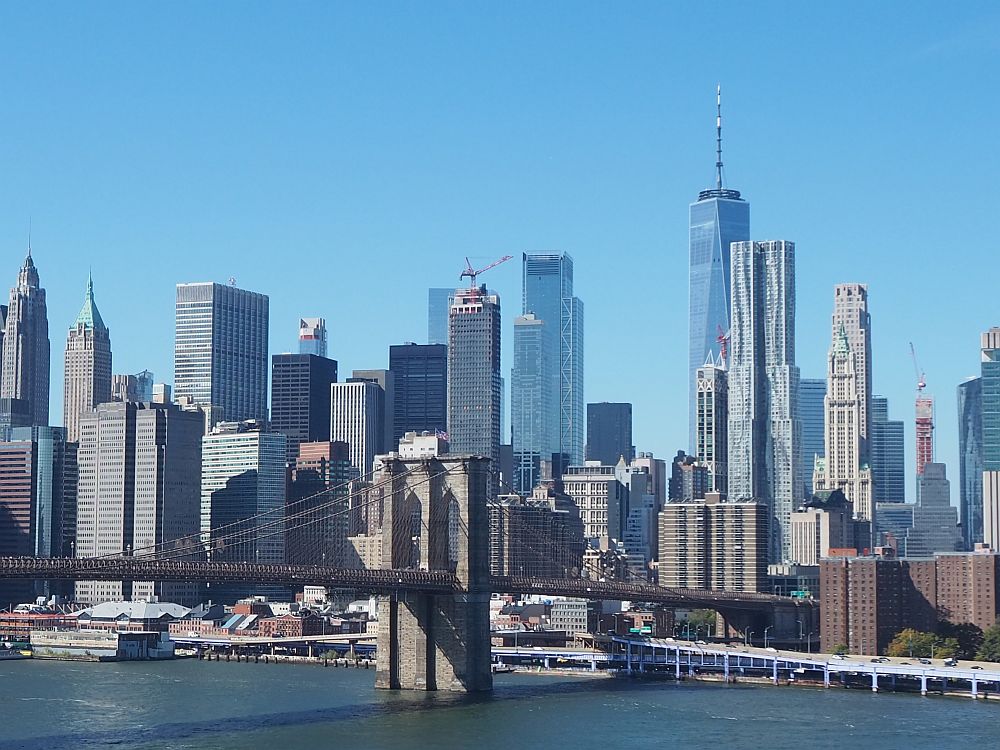
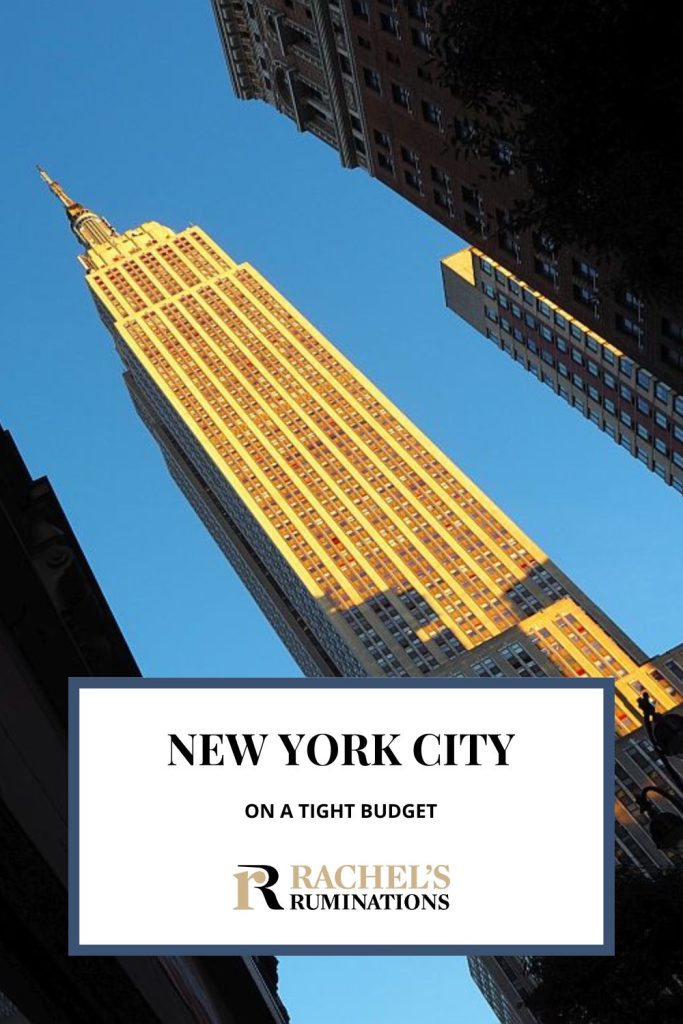
1. Some general tips for seeing New York City cheaply
Seeing a show on or off Broadway
If you want to see a Broadway or Off-Broadway show, and are willing to be flexible about which one, the best place to go is the TKTS booth in the middle of Times Square to buy half-price or reduced-price theater tickets on the day of the show. Often, more seats are available for matinees, so you’re more likely to get one of the newer, more popular shows if you consider attending the matinee. There are also TKTS booths at the South Street Seaport and in Brooklyn, and at those you can buy matinee tickets for the next day as well.
TKTS Times Square at Broadway and 47th. No bank cards are accepted: only credit cards, cash or traveler’s checks. Get there when they open or even earlier for the best selection. (TKTS website)
The Staten Island Ferry
The Staten Island Ferry is an absolute must-do, and it’s free! You’ll have to get off and re-board at each terminal, but the views of the city, the harbor, and the Statue of Liberty are amazing! Lots of New Yorkers use the ferry to commute into Manhattan from Staten Island and back in the evening. Avoid the long lines and crowds by taking the ferry outside of rush hour.
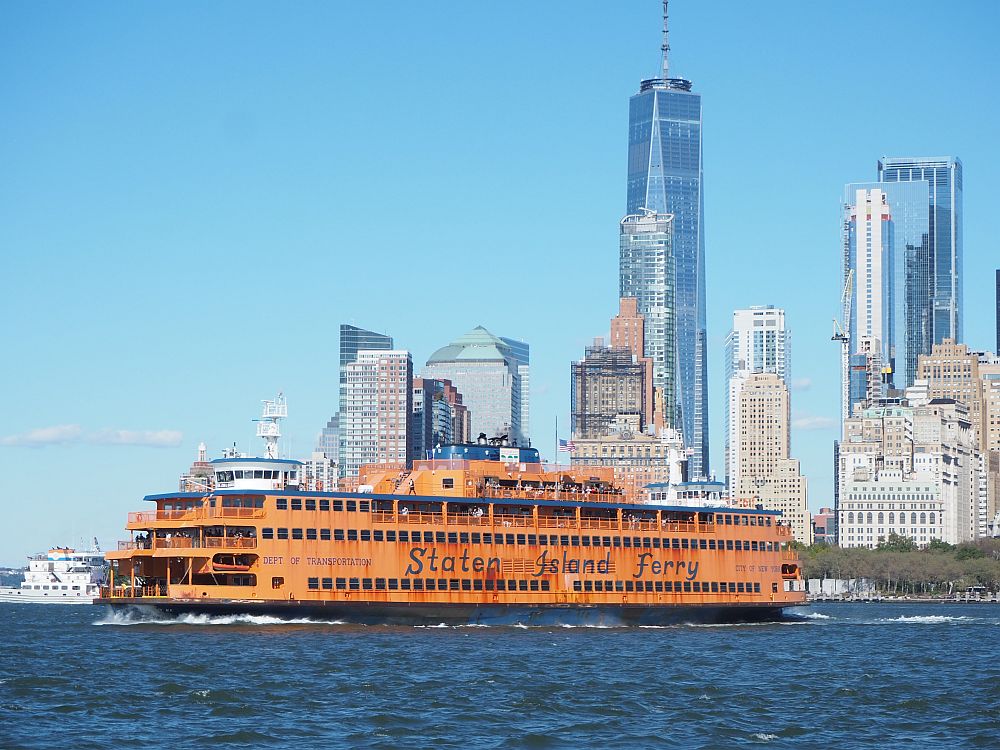
Staten Island Ferry: East end of Battery Park, Lower Manhattan. Daily, with departures every 15-30 minutes. (Staten Island Ferry website)
Cheap food
Street food is cheap (hot dogs, pretzels, etc.), and the more “hole-in-the-wall” a place is, the cheaper it’s likely to be, especially in the less-touristy neighborhoods. Take-out food like burgers, falafel, burritos, deli sandwiches or bagels will be cheaper than food that is served to you at a table—and you don’t have to leave a tip if you’re not served at a table. The bagels you find in New York, by the way, are the best in the US—it has something to do with the water they’re boiled in.
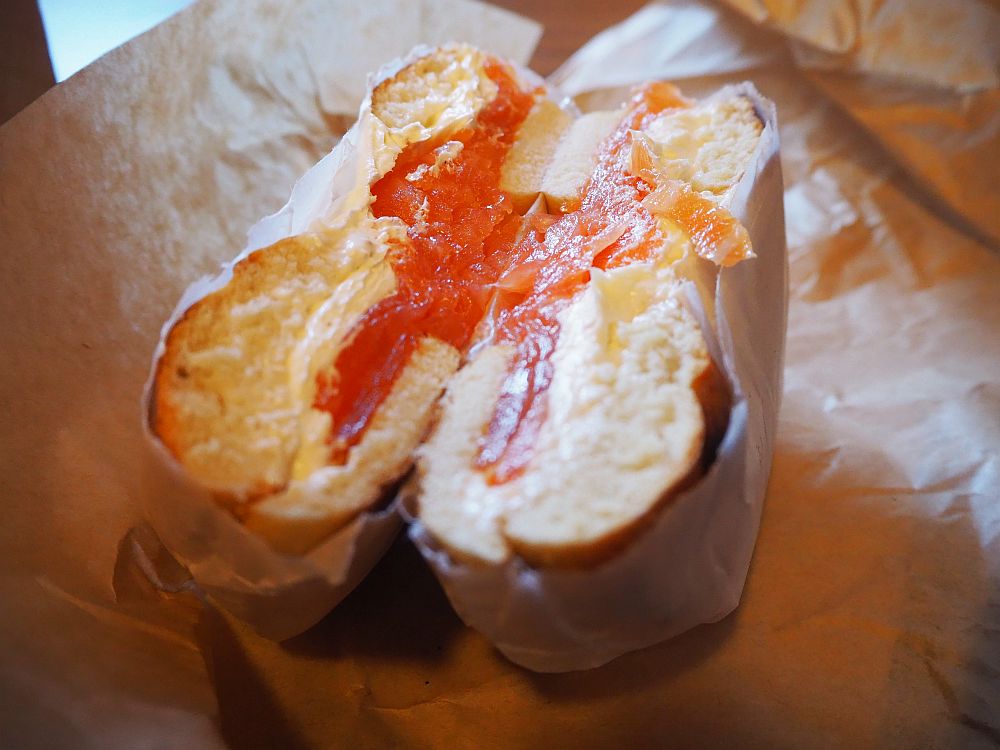
If you want Chinese food, try Chinatown, but stick to the little places on the side streets: the more hole-in-the-wall, the more authentic the food is likely to be, as well as cheaper, since they cater to locals rather than tourists.
Wherever you eat, if you are served at a table, you are expected to leave a tip, usually about 15-20% of the bill. Don’t skimp if the service is good; waiters are paid very poorly in general.
Data roaming and wifi
If your data plan doesn’t cover NYC, turn off data roaming, or you’ll be in for a nasty surprise when you get home. Starbucks is everywhere, and they have free wifi. So do lots of other places – it’s more common in the US than in Europe. In most of them you can just step in the door, stand along the wall away from the counter, download your messages and get out again without spending anything!
Shopping
If you’re not from the US, you might expect the price marked on an item to be the actual price. It’s not! Sales taxes of 8.875% (as of this writing) are added at the register, so don’t take the marked price as the final price!
Getting around
The subway is the fastest and easiest way to get around the city. When you travel on the subway, make sure of which train you’re getting onto. Some are locals, which stop at every station, and some are express trains, which only stop at major stations. They’re usually on the same track so check before you board. Buses are slower, but you get to look at the street out the window.
A single ride on the subway or bus costs $2.75. You can pay this by swiping your credit or debit card or your smartphone. You can transfer once (including between the bus and train systems) using the same card.
If you’re going to be using the subway or buses a lot, it’s cheaper to buy an unlimited pass MetroCard, which costs $33 for 7 days or $127 for 30 days. If you’re going to be out late clubbing, though, you’ll have to add some cash to the card as well, because the “unlimited” part doesn’t cover travel after midnight.
Visitors are sometimes concerned about safety in the subway system, but just use your common sense and you’ll be fine. Stand away from the tracks until your train pulls up, and if the station is empty, stand where personnel can see you either live or over security cameras. As in any big city, it’s unwise to flash your wealth, so leave the fancy jewelry and watches at home.
2. Walking is free in New York City
I never get tired of walking in New York City or, rather, I get tired, but not bored. There’s something new around every corner! Here are some ideas of great places to walk in the city:
Central Park
Central Park is one of the best places for a walk, of course, for locals and tourists. See the section called Strawberry Fields, dedicated to John Lennon. Admire the Central Park Carousel, or watch the action on the Model Boat Sailing Pond. Stroll the paths through the landscape, keeping an eye out for statues of various literary figures. Take some dramatic pictures of the cityscape around the park. There’s lots more to see, and that’s not counting all the people-watching you can do. The park is 3.4 square kilometers or 843 acres, so it could easily take a whole day and a lot of walking to see it well.
The Brooklyn Bridge and the Manhattan Bridge
Both of these bridges have pedestrian walkways and offer amazing views of the New York City Skyline. The Brooklyn Bridge is more well-known and gets more crowded and the Manhattan Bridge gives you a view of the Brooklyn Bridge in front of the skyline. (See my photo at the top of this article.) I’d suggest taking the Manhattan Bridge if you can only do one, or, if you have time, walking one way on one and back on the other. Read my article about the round-trip walk here.
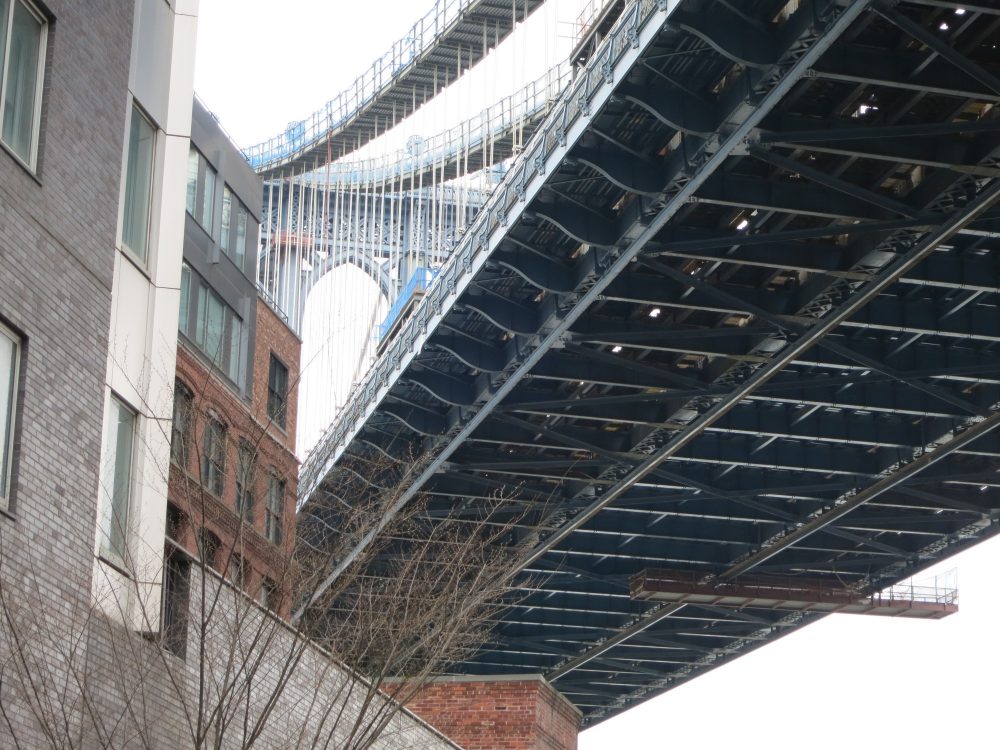
Watch the sunset over the city
Brooklyn is the best place to see the sunset over New York City, so time your walk over one of the bridges so that you can see the sunset. The Brooklyn Heights promenade was suggested in one of the comments below. The DUMBO area has a range of great viewpoints. Read where to see the most beautiful sunsets for some specific tips about watching the sunset from DUMBO.
There are plenty more places to enjoy wonderful views – sunset or otherwise – though some of them come at a cost.
But getting back to walking: pretty much any public park or green space in New York City is worth a stroll. Washington Square Park in Greenwich Village, for example, is very small, but there’s always something going on: street performances, protests, and you’ll see a great cross-section of New York personalities. The same goes for Bryant Park in midtown, where you could also visit the New York Public Library.
Walking at Christmastime
If you’re in NYC in November or December, make sure to walk along Fifth Avenue to admire the ornate Christmas windows of the high-end shops. When I was a kid, a trip to the city to see the windows was a yearly ritual. Stop at Rockefeller Center too to watch the ice skaters and admire the enormous Christmas tree.
Rockefeller Center
Rockefeller Center was built in the 1930s and is certainly worth a look, especially if you’re interested in the art (sculptures and murals) and buildings of that period. Great people-watching too, especially at Christmastime.
Rockefeller Center: Between Fifth and Sixth Avenue, around 49th and 50th St, Midtown (Rockefeller Center’s website).
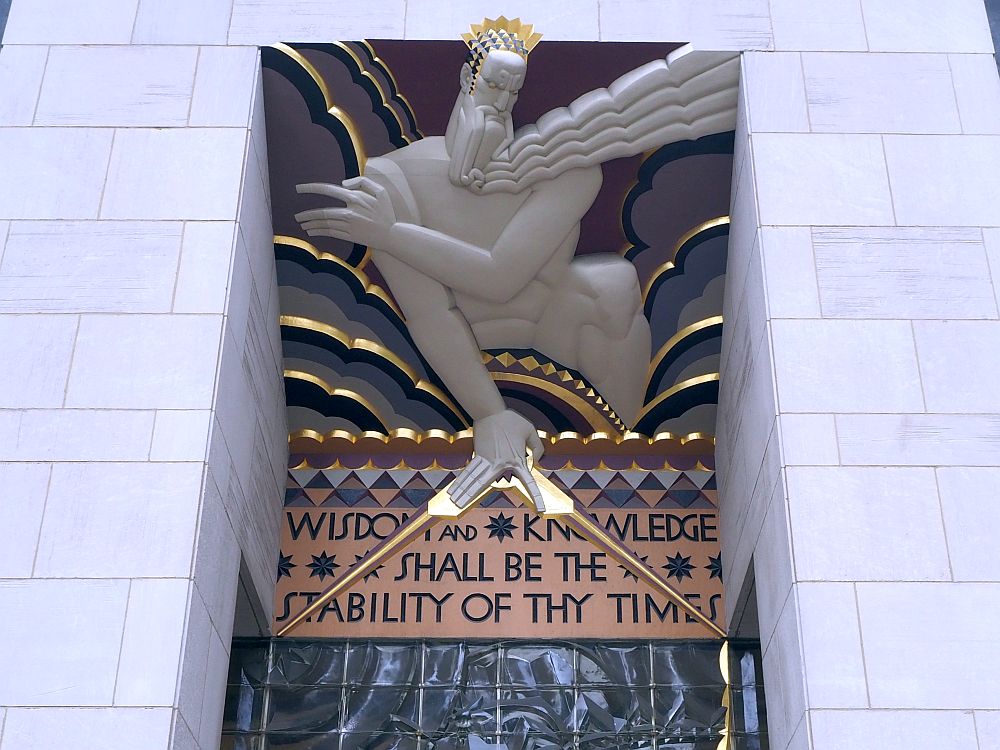
Art Deco
And speaking of Art Deco, even if you can’t afford to take the elevator to the top of the Empire State Building (350 Fifth Avenue), the art deco style of the lobby is definitely worth seeing, if you can talk the guards into letting you in. (If you decide you do want to go up, click here for fast-track access tickets.)
Also check out Radio City Music Hall (1260 6th Avenue between W. 50th and W. 51st St.) and the Fred F. French Building‘s lobby too (45th St. and Fifth Avenue) for great decorative style. The same goes for the Chrysler Building (405 Lexington Avenue) and Grand Central Station (which was built earlier in Beaux Arts style, but is worth seeing inside: make sure to look up!). If you want to learn more about Grand Central, take the audio tour).
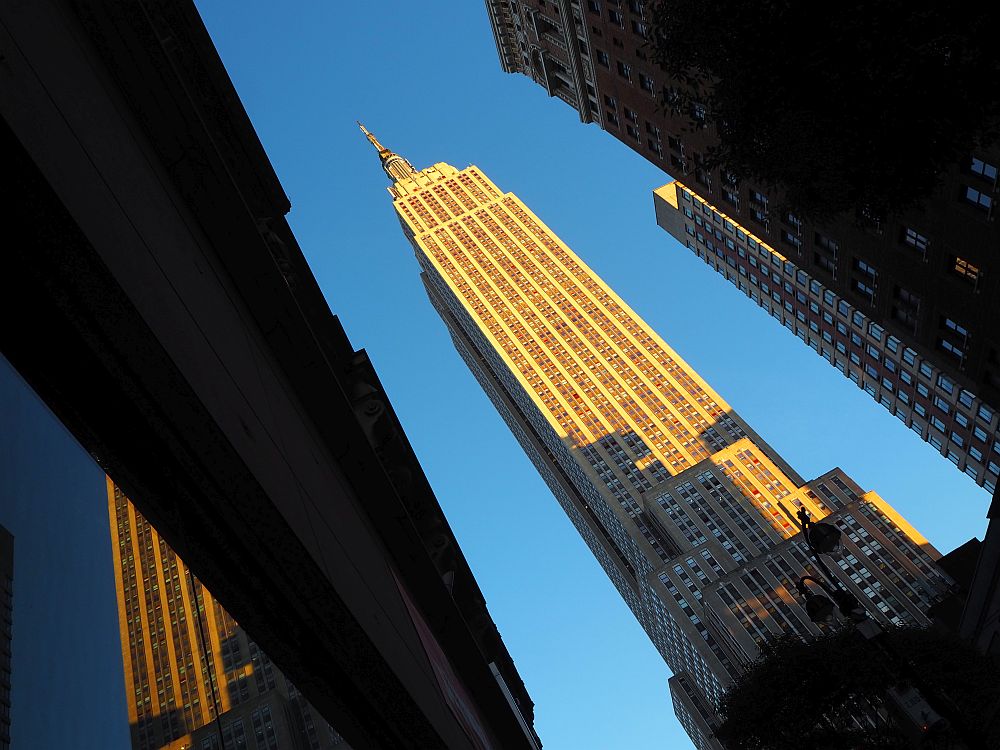
Times Square
When I was a kid, Times Square was a seedy place, best avoided, with its grimy appearance, flashy signs and ubiquitous peep shows. Today, it’s a tourist destination – meaning tourists go there but locals tend to avoid it – yet it’s one of the best ways to spend an evening! Embrace your inner tourist and take a look one evening, just as it’s getting dark. Besides the amazing sensory overload of the neon and electronic signage covering the surrounding buildings, there’s usually something going on: from street musicians to acrobats to living statues. And all of it is free!
High Line
This part of the elevated railway network was abandoned years ago and stood derelict until it was recently reshaped into an elevated park. Some spots have great views of this gritty part of the city (though that’s changing with the creation of this park), and the Hudson River as well. Public art exhibits and other events are on offer all year. Great people-watching here too! (Read my post about the High Line and/or visit The High Line’s website)
High Line: Gansevoort Street to West 34th between 10th and 12th Avenues, Chelsea.
Governors Island
This former military base in New York Harbor is now a National Monument converted into public space. You can visit a former prison and a former fortress, as well as see some breathtaking views of Manhattan, the Statue of Liberty and Ellis Island. An artificial hill rises in the southern part of the island with long slides snaking down its side.
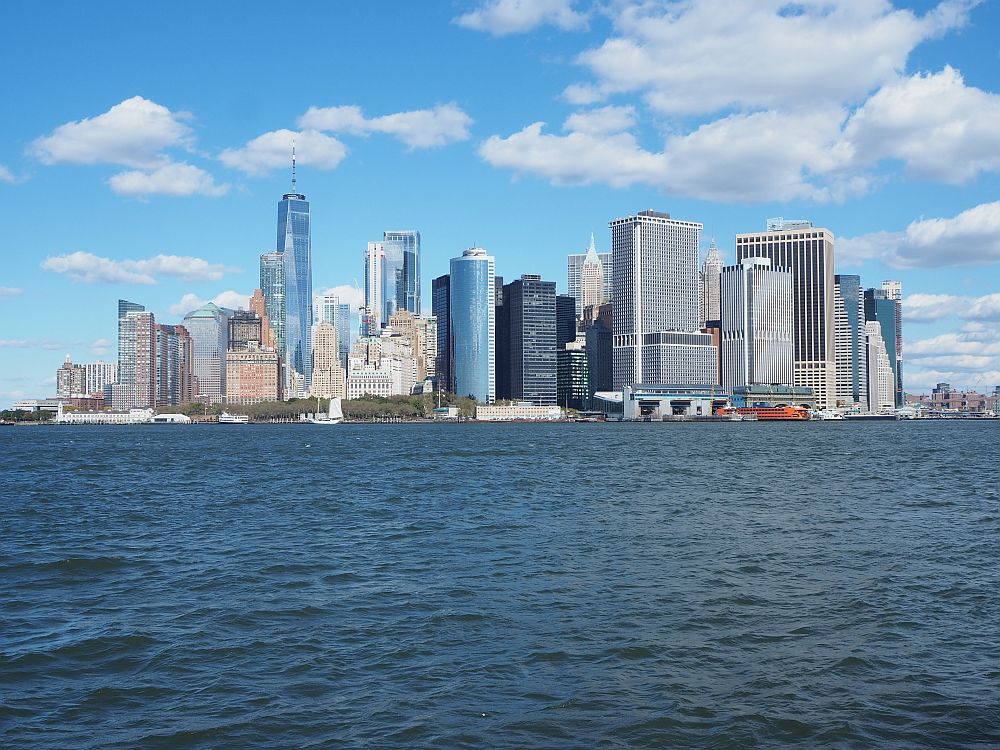
Governors Island: Open all year. Check their website for hours and ferry schedules. Leaves from the Battery Maritime Building (very near the Staten Island Ferry), 10 South Street, Lower Manhattan. The ferry costs $3 round-trip, but it’s free on Saturdays and Sundays before noon. (Governor’s Island website)
Roosevelt Island
This sliver of land in the middle of the East River is a pleasant place to walk. At the southern end of the island you’ll find the spooky Gothic Revival ruin of a smallpox hospital. Next to that is Four Freedoms Park, a memorial to Franklin D. Roosevelt and to his ideas about human rights. At the northern end is another little park with a lighthouse.
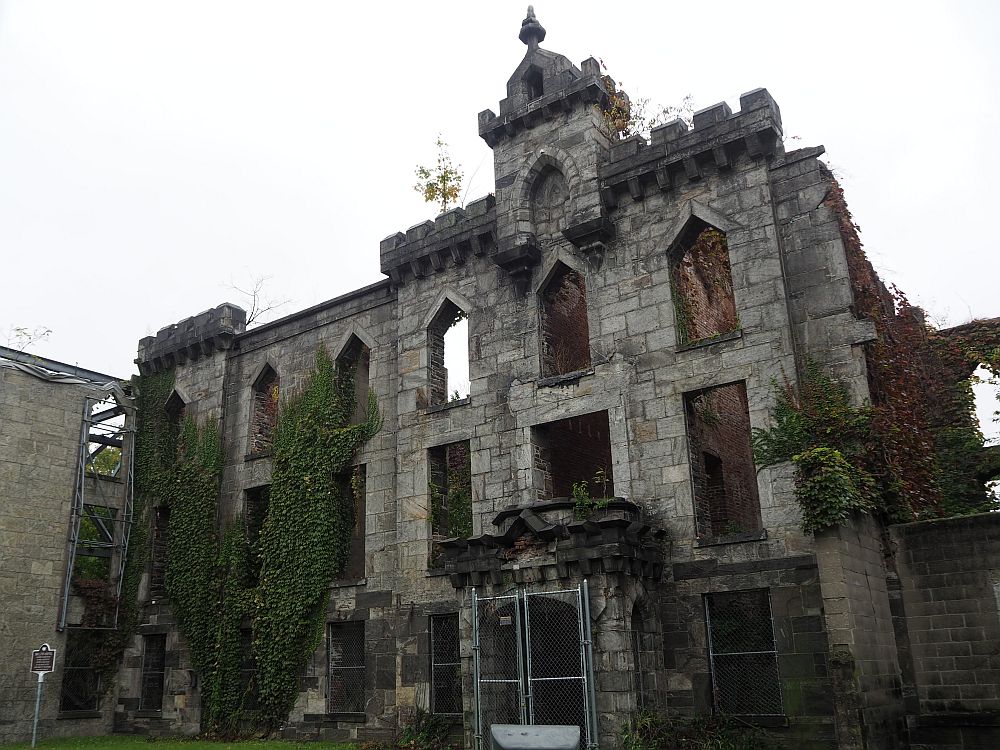
Roosevelt Island can be reached by subway or cable tramway. By subway take the F train to the Roosevelt Island stop. The scenic route is to take the tramway from 59th and 2nd Avenue. The ride only takes a few minutes and offers great views of the city. It costs the same as a subway or bus ride. Use your Metrocard to pay. Open all year every day into the wee hours of the morning.
Take a free walking tour
Various groups offer “free” walking tours in various parts of the city. I put the word “free” in quotation marks because the expectation is that you will tip the tour guide based on how good you think the tour was. Rather than trying to write a comprehensive list, I’ll just refer you to tripsavvy’s list.
You might also like these articles:
3. Free museums in NYC
While Washington, D.C. is best known for free national museums, New York City has some too, which is great if you’re on a tight budget. Here are some national museums and historic places, plus a few others that are also free:
The National Museum of the American Indian
While you’re in Lower Manhattan to take the Staten Island Ferry and stroll around the Battery, check out the National Museum of the American Indian, very nearby the Staten Island Ferry terminal. It displays artifacts from its permanent collection but also rotates some fascinating temporary exhibitions about Native American culture. The historical Custom House that is home to the museum is worth a look itself. Even if you have no intention to spend any money, take a look at the renovated gift shop, which used to be the Cashier’s office of the Customs House. The wonderful details of the space have been restored.
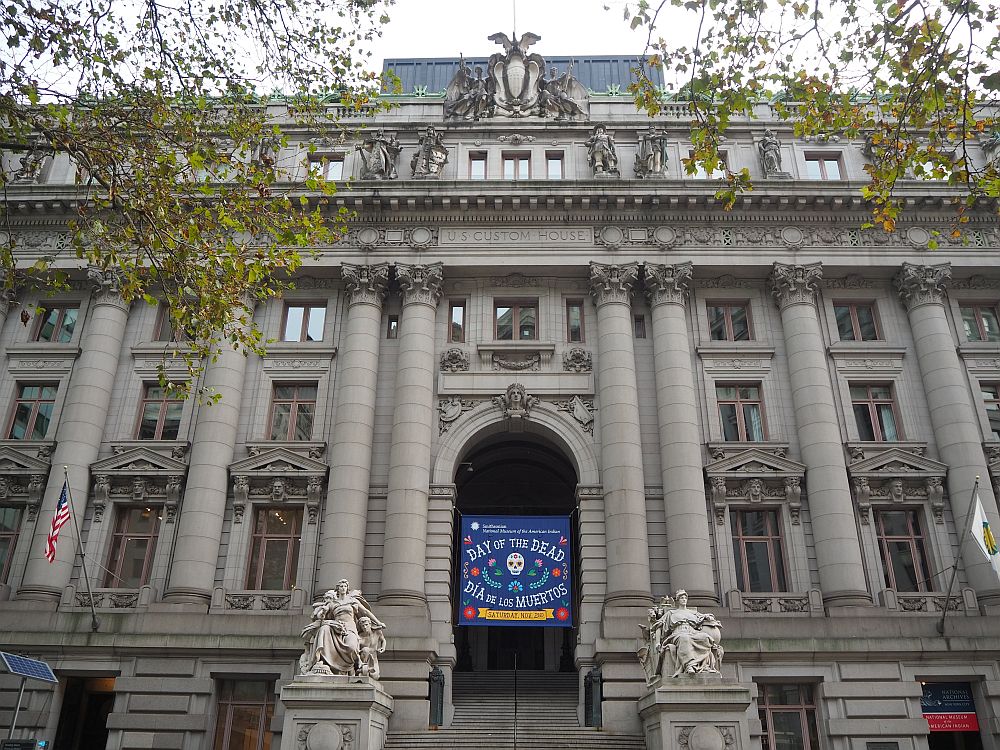
National Museum of the American Indian: Open 10:00-17:00 daily, Thursdays until 20:00. Admission: free. One Bowling Green, on the NE corner of Battery Park. (NMAI’s website)
African Burial Ground
This burial ground was the final resting place for thousands of free blacks as well as slaves. It was discovered in the 1990s during construction of the Federal Building, and this small national monument was incorporated into the new building. A visitor’s center teaches about Africans in 17th and 18th century New York, and a memorial stands outdoors. It’s a fascinating piece of history that generally doesn’t get taught in schools: that slavery also existed in the north, and that free and enslaved Blacks sometimes were part of the same community.
African Burial Ground: Open Tuesday-Saturday 10:00-16:00, outdoor memorial open until 17:00. Closed Christmas and Thanksgiving weeks and some other public holidays. Admission: free. Ted Weiss Federal Building, 290 Broadway between Duane and Reade Streets, Lower Manhattan. (Read my post about this museum and/or visit the ABG’s website)
Theodore Roosevelt Birthplace
As the name suggests, this 1848 brownstone is where Teddy Roosevelt was born and he lived here until he was 14. Five of the rooms have been restored to what they looked like when the Roosevelts lived here in 1865.
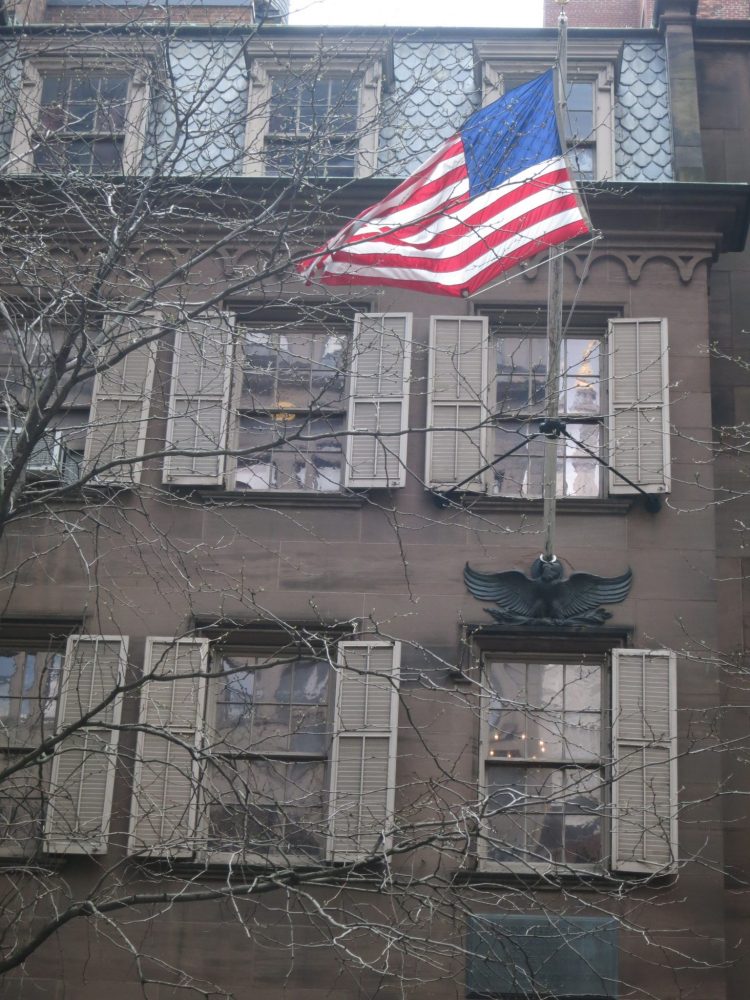
Theodore Roosevelt Birthplace: Open Wednesday-Sunday 10:00-12:00 and 13:00-16:00. Admission: free. 28 East 20th Street between Park Avenue South and Broadway. (Read my post on this museum and/or the museum’s website)
Hamilton Grange
This was the home of Alexander Hamilton, one of America’s Founding Fathers and a signer of the Constitution. At the time, it was in the countryside, a place to retreat after he retired from politics. There are exhibits about Hamilton’s life, as well as period rooms.
Hamilton Grange: Open Wednesday-Sunday 9:00-17:00. Admission: free. Guided tours are at 10:00, 11:00 and 14:00. You can only go self-guided between 12:00-13:00 and 15:00-16:00. 414 West 141st Street, between Convent Avenue and St. Nicholas Avenue (Hamilton Grange website).
The Dyckman Farmhouse Museum
I’m cheating a little here because the Dyckman Farmhouse Museum isn’t free, but it’s very cheap. Dating to about 1785, this is the oldest remaining farmhouse in Manhattan. It’s a lovely Dutch colonial structure and the rooms are decorated to give an idea of life in the days when this was a real farm. Today only a small half-acre garden remains.
Dyckman Farmhouse Museum: Open Friday 12:00-16:00 and Saturday 10:00-16:00. Admission: $3. 4881 Broadway in Manhattan. Take the A or 1 subway to 207th Street. Website.
South Street Seaport
South Street Seaport has several components and is a pretty place for a stroll among the historic buildings, most of which now house shops and restaurants. The South Street Seaport Museum covers New York City’s history as a vibrant port, and includes some historic ships that you can board.
South Street Seaport: Check website for opening hours since they change throughout the year. Admission: free except for extras like boat rides. 12 Fulton Street between Front and South Streets. (the museum’s website)
The Federal Reserve Bank of New York
If money interests you, visit the Federal Reserve Bank of New York. You need to reserve ahead to visit. Here you’ll see the high-security vault, safeguarding the gold well below street level, as well as exhibits about money. Taking the tour is required, and it would be wise to book it ahead.
Federal Reserve Bank of New York: Tours offered Monday-Friday at 13:00 and 14:00. Admission: free. 33 Liberty St, Lower Manhattan. Enter at 44 Maiden Lane (FRB website).
The New York Public Library
The New York Public Library, with its iconic lion statues, is a gorgeous Beaux-Arts building next to Bryant Park in mid-town. It’s free, of course, to enter, and always has exhibitions and events going on. Check out the breathtaking reading room, or just sit and relax for a while.
The New York Public Library’s Stephen A. Schwarzman Building: Open Monday to Saturday at 10:00-18:00 but open till 20:00 on Tuesday and Wednesday. Sundays 13:00-17:00. Admission: free. Fifth Avenue and 42nd Street. (the library’s website)
Chelsea galleries
The galleries in the Chelsea neighborhood are the place to see all of the up-and-coming artists, and it’s perfectly acceptable to visit without intending to buy. On Thursday evenings some will be holding openings, which means free wine and cheese. Most are in the 20s (i.e. 20th to 29th Streets) between 10th and 11th Avenues. (Listing)
Bronx Museum of the Arts
If you’re an artsy person, it’s worth venturing out of Manhattan to visit the Bronx Museum of the Arts. Its specialty is contemporary and multi-ethnic art that reflects the urban experience.
Bronx Museum of the Arts: Open Wednesday-Sunday 13:00-18:00. Admission: free. 1040 Grand Concourse at 165th Street, The Bronx. D or B subway to 167 Street Station. (museum’s website)
The Museum at FIT
Fashionistas should certainly visit the Museum at FIT (Fashion Institute of Technology). They have lots of special exhibitions on various aspects of fashion and couture, as well as a large permanent collection. They also have a gallery of current students’ and faculty’s creations.
Museum at FIT: Open Wednesday-Friday 12:00-20:00; Saturday and Sunday 10:00-17:00. Admission: free. Seventh Avenue at 27th Street. (their website)
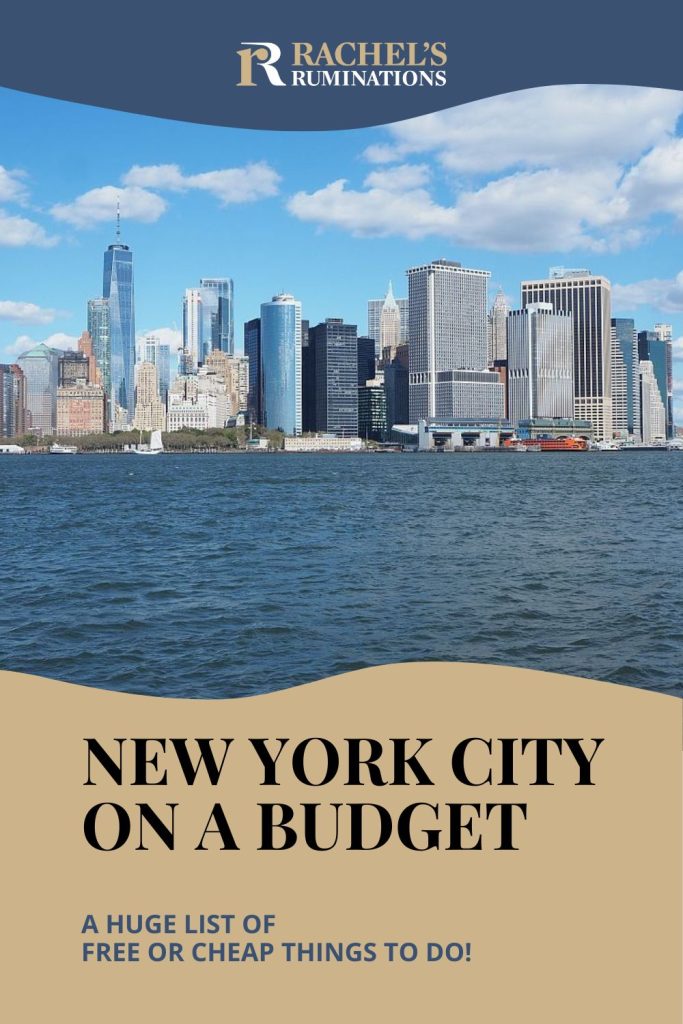
4. Sometimes free (or cheap) museums in NYC
Museums in New York City can be extremely expensive, but many offer occasional free afternoons or evenings or pay-what-you-want times: much better for your budget, but you’ll be dealing with more of a crowd than normal. Below are some of them, but you can download a more complete free guide or any of several other helpful resources for a visit to New York City at Travel New York Now.
City passes
If you don’t want to work around these limited free admission times and are planning to go ahead and buy tickets to some of the museums or attractions, it might be worth getting one of the passes that are available, like CityPass (5 top attractions in 9 days), Go City’s Explorer Pass (2-10 attractions within 60 days) or Go City’s All-Inclusive Pass (1-10 days with unlimited attractions). Depending on how many you want to see, you could save significant money.
The Museum of Modern Art and MoMA PS1
MoMA is my absolute favorite modern art museum, with art from the post-war period until today. It owns the true icons of each movement. Since its recent redesign and expansion, the art is exhibited more eclectically, with abstract expressionist classics, for example, paired with much more recent work by less well-known artists.
MoMA PS1 is a separate branch of MoMA in Queens and worth considering if you can’t afford the MoMA admission.
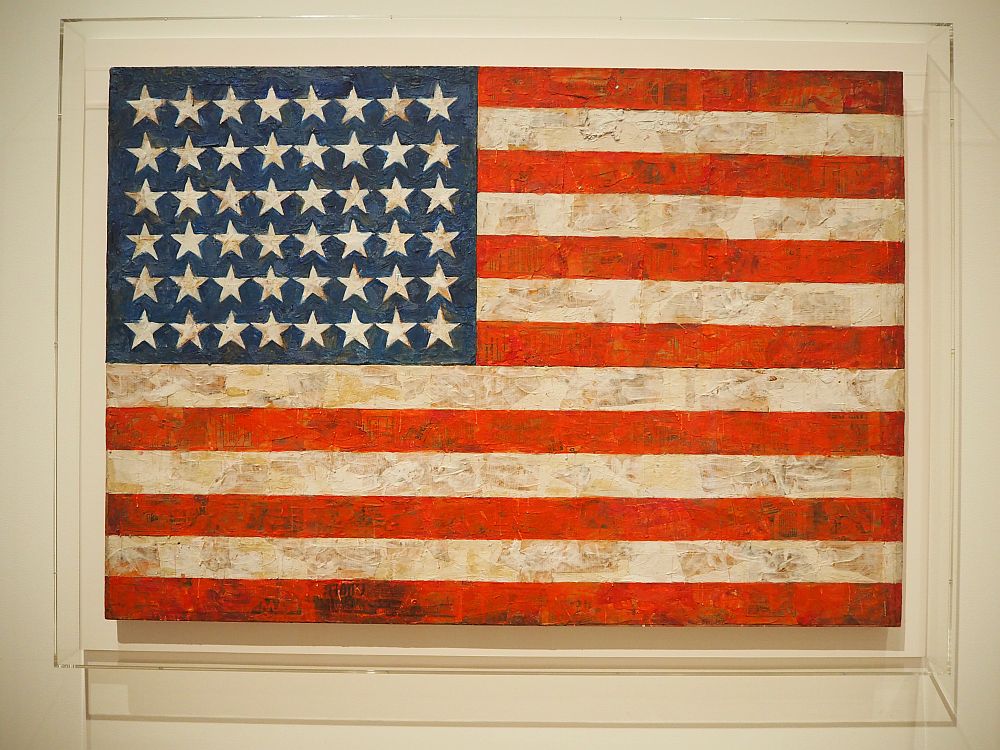
MoMA: Open Sunday-Friday 10:30-17:30 and Saturdays 10:30-19:00. Normally, admission is $25, but every Friday night, admission is free for New York City residents only from 16:00 to 20:00. 11 West 53rd Street between Fifth and Sixth Avenues. (MOMA)
If you decide to go when it’s not free, get this skip-the-line ticket.
MoMA PS1: Open Sunday, Monday, Thursday and Friday 12:00-18:00 and Saturday 12:00-20:00. Admission is $10, but this is a suggested price, so pay less if need be. Free at all times to New York City and New York State residents. 22-25 Jackson Avenue, Queens. (MoMA PS1’s website).
The Guggenheim
This Frank Lloyd Wright building is a gem architecturally, worth visiting just to see the building. The museum hosts modern and contemporary art exhibitions and some really important retrospectives.
The Guggenheim: Open Sunday-Friday 11:00-18:00 and Saturday 11:00-20:00. Admission is normally $25 but on Saturdays 18:00-20:00 you can pay what you wish. 1071 Fifth Avenue between 88th and 89th Streets. Subway 4, 5, 6 or Q. (Website)
The Cooper-Hewitt
Housed in what was once a mansion owned by the Carnegie family of wealthy industrialists, this museum has a massive collection of design objects: decorative arts, textiles, graphic design, and so on. If design is your thing, this museum is a must.
The Cooper-Hewitt: Open daily 10:00-18:00. Admission is normally $16 ($18 if bought at the door), but between 17:00 and 18:00 each day, it’s pay-as-you-wish. 2 East 91st Street at Fifth Avenue. (Website)
The Morgan Library & Museum
Built at the turn of the 20th century to house Pierpont Morgan’s personal library, this amazing Italian Renaissance style creation is still serving the same purpose. Additions to the library – an annex built in 1928, Morgan’s brownstone home next door, and a huge annex built in 2006 – allow plenty of space for exhibitions and events. The original library’s interiors are just breathtaking.
The Morgan: Open Tuesday-Sunday 10:30-17:00 and on Friday until 19:00. Admission is $22, but you can get free entry to the historic rooms on Tuesday and Sunday 15:00- 17:00. Every Friday admission to the Morgan is free from 17:00-19:00 – you are required to reserve, and can only reserve up to a week in advance. 225 Madison Avenue. (The Morgan)
Museum of Arts and Design
This used to be a crafts museum, but it now covers all sorts of decorative arts, including architecture, ceramics and textiles.
MAD: Open Tuesday-Sunday 10:00-18:00. Admission is $18, but on Thursdays from 18:00 to 21:00, tickets are half price. 2 Columbus Circle. (MAD)
The New Museum
This art museum is all cutting-edge contemporary art, even the building itself.
The New Museum: Open Tuesday-Sunday 11:00-18:00 and until 21:00 on Thursdays. Admission normally $18, but on Thursdays from 19:00 to 21:00, you can pay what you want, with a suggested minimum of $2. 235 Bowery near Prince Street. (New Museum’s website)
El Museo del Barrio
This museum is a cultural center celebrating Latino, Caribbean and Latin American arts and cultures. Their permanent collection ranges from ancient indigenous to contemporary art from the US, Latin America and the Caribbean. It is exhibited in six thematic groups: urban experiences, expanded graphics, African and Indigenous heritages, craft intersection, women artists and representing Latinx. There are also temporary exhibitions.
El Museo: Open Thursday-Sunday 11:00-17:00. Admission is $9 but it’s always Pay-What-You-Wish. 1230 Fifth Avenue between 104th and 105th Streets. (website)
Museum of the City of New York
The “Big Apple” is unlike any other city in the world. To delve into its history and culture – or rather its multiple histories and cultures – this museum is a great place to go. Exhibitions drill down to a myriad of smaller stories of particular events, groups of people, or phenomena, both in history and today, through the arts, historical objects or images.
Museum of the City of New York: Open Thursday 10:00-21:00 and Friday-Monday 10:00-17:00. Admission is suggested at $20, which means you can offer less at any time. 1220 Fifth Avenue at 103rd St. (MCNY’s website)
Museum of Chinese in America
If you’re curious about immigrant history, this museum in Chinatown is a good place to visit. It’s in an impressive building, designed by Maya Lin. It does an excellent job of telling the story of Chinese immigration and the many barriers this group faced to taking part fully in American life. For someone like me who wasn’t familiar with more than the outlines of their history, it was an eye-opener.
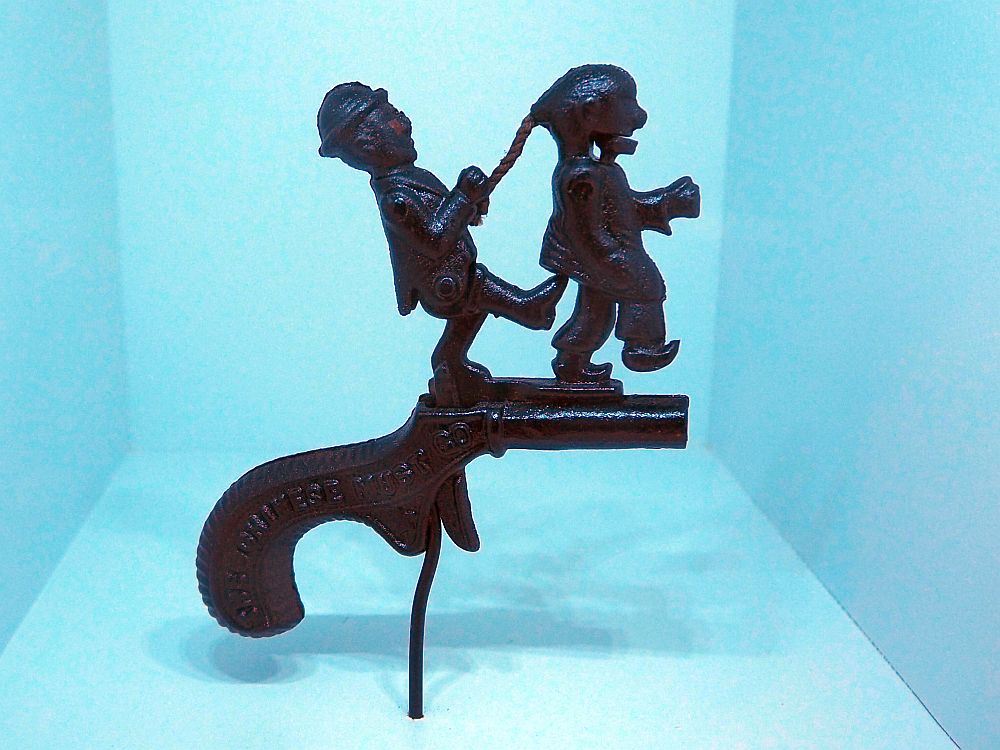
MOCA: Until sometime in the spring of 2023, MOCA will only be open to the public on Saturday 10:00-18:00. Admission is free until the end of March 2023. Admission is normally $12, but with an occasional free admission evening. Check their website for changes in hours and prices. 215 Center Street, between Howard and Grand and one block north of Canal Street. (Read my review of the museum or the museum’s website at MOCANYC)
Speaking of immigration, and despite the fact that it’s not cheap at $30/tour, the Tenement Museum in the Lower East Side is high on my list of recommended sights in NYC. Sign up for one of their tours through a genuine tenement house where a range of immigrants of many ethnicities lived. It’s fascinating and, unless you’re Native American, it probably at least touches on your own family’s history. Read my review here.
And another point about immigration: Ellis Island is where the immigrants to New York went first, and where the immigration authorities poked and prodded and questioned them to decide whether to admit them. Today it houses a wonderful immigration museum, which is free, but the only way to get there is via Statue City Cruises. For $24 you can visit Ellis Island and the grounds of the Statue of Liberty, though it’ll cost you extra to go into the statue. Book ahead through their website and get to the pier early to pass through security.
The Museum of Jewish Heritage
Permanent as well as temporary exhibitions are designed to honor Jews who died in the Holocaust by presenting and celebrating modern Jewish culture, history and traditions.
Museum of Jewish Heritage: Open Sunday and Wednesday 10:00-17:00, Thursday 10:00-20:00 and Friday 10:00-15:00. Admission normally $18, but free on Thursdays 16:00-20:00. Edmond J. Safra Plaza, 36 Battery Place, Lower Manhattan. (MJHNYC)
The Jewish Museum
The museum has a large collection of artworks from antiquity to contemporary art, and at the same time a collection of objects related to Jewish experience and history.
The Jewish Museum: Open Saturday-Monday 11:00-18:00, Thursday 11:00-20:00 and Friday 11:00-16:00. Admission is normally $18, but it’s free every Saturday. 1109 Fifth Avenue at 92nd St. Website.
Museum at Eldridge Street
This beautiful 19th-century synagogue is now home to a museum about Jewish immigrants in the Lower East Side. With a decreasing Jewish population in the 20th century in the area, the synagogue deteriorated, but its restoration was completed in 2007. Today the main thing to see is the elegant architecture itself, along with temporary exhibitions on various topics related to modern or historical Judaism.
Museum at Eldridge Street: Open Sunday-Friday 10:00-17:00. Regular admission is $15, but you can pay what you wish on Mondays and Fridays. 12 Eldridge Street at Broome Street. (Website)
The 9/11 Memorial and Museum
It may seem morbid, but this museum and the memorial on the site of the World Trade Center towers have become one of the most-visited destinations in New York. It is an impressive and moving experience.
9/11 Memorial and Museum: The memorial is free and open daily 8:00-20:00. The Memorial museum is open Wednesday-Monday 9:00-19:00 (last entry 17:30). Admission normally $26 (Skip-the-line admission here), but on Monday afternoons 15:30-17:00 the tickets are free – the free tickets are available on a first come, first served basis through their website starting that same morning at 7:00. Entrances at Liberty Street and Greenwich Street, Liberty Street and West Street, or West Street and Fulton Street. (9/11 Memorial and Museum) (Here’s my post about the memorial.)
5. Some possible combinations
While your itinerary will depend on lots of variables: your budget, your energy level, how much time you have, and, of course, your interests, it might be worth pointing out which things are near each other. Here I’ll group them roughly north to south.
Northern Manhattan
The Dyckman Farmhouse is near the very northern tip of Manhattan. The Hamilton Grange is also in the north of Manhattan, but 60 blocks south in West Harlem.
Museum Mile
Going north to south along the eastern edge of Central Park, on the part of Fifth Avenue called Museum Mile, you’ll find El Museo, the Museum of the City of New York, the Jewish Museum, the Cooper-Hewitt, and the Guggenheim.
Midtown
The most popular New York sights are in midtown Manhattan. Rockefeller Center, Radio City Music Hall, the fancy stores on Fifth Avenue, the Museum of Modern Art, the Chrysler Building and Grand Central are relatively nearby each other. Times Square is there too, as are the main Broadway theaters and Bryant Park and the New York Public Library. Don’t be afraid to hop on a subway or bus between things in Midtown though; the distances aren’t as small as they look on a map! The subway shuttle between Times Square and Grand Central can come in handy for crossing midtown.
FIT, the Morgan, and the Empire State Building are also considered to be in midtown, but they’re a bit further south. The Theodore Roosevelt Birthplace Museum is even further south, near Union Square.
The south of Manhattan
Chelsea is on the lower west side of the city, along the Hudson River. You’ll find the High Line there as well as Hudson River Park. Moving a bit south and east is Greenwich Village, home to Washington Square Park. And east of there is the Lower East Side, where you’ll find the Tenement Museum and the Museum at Eldridge Street, which is also right on the edge of Chinatown. The African Burial Ground is near Chinatown, where the MOCA museum is too. The New Museum is also quite nearby. From Chinatown you can walk across the Manhattan Bridge for amazing views.
The Financial District
There’s a lot to see at the southern tip of the city, usually called the Financial District, but be warned that the distances are still huge. The 9/11 Memorial and Museum is there. The Federal Reserve is, not surprisingly, in the Financial District and South Street Seaport is next to the Financial District, on the bank of the East River. Battery Park is where the ferries to Staten Island, Governors Island, Ellis Island and the Statue of Liberty leave from. The National Museum of the American Indian is right next to Battery Park.
6. Sleeping in New York City
I’ll be honest here. Accommodations are expensive in New York. After all, it’s one of the most expensive cities in the world! So it’s hard to sleep in New York City and keep to a budget. I’d suggest spending some time on booking.com or Expedia. Make sure to use map view to make your choice, so you can be sure that wherever you stay is near to a subway station.
Don’t assume you have to stay in Manhattan; it’s the most expensive part of the city for accommodations. If you are determined to stay in Manhattan, don’t assume Harlem is unsafe. It isn’t any less safe than the rest of the city, and accommodations there are often cheaper than other parts of Manhattan. Consider Brooklyn as well, or across the river in New Jersey. They’re cheaper, and as long as a subway or train station is nearby, you can make it work.
I’ve only stayed in a few New York hotels recently, and all were pricey, though on a New York City scale they were reasonable:
- TWA Hotel at JFK Airport is a stylish retro rebuild of Eero Saarinen’s TWA terminal building. It’s right inside the airport grounds. Read my review here.
- Jane Hotel (lower Manhattan) is a quirky place with a nautical history and its “cabins” cost a bit less than the rooms at the TWA Hotel. Read my review here.
- I also booked Club Quarters, midtown, through Hotwire, but it still cost over $200 a night. Nevertheless, it was a good hotel.
- Pod51, also in midtown, is more bare bones, yet manages to seem chic. I stayed there in a bunkbed room with my sister for a bit under $200.
Be extremely cautious about sites like Airbnb or VRBO. New laws in New York City require that the host lives in the same unit or apartment and doesn’t rent to more than two guests at a time. The unit has to be officially registered with the city for the rental to be legal. If anyone is trying to rent you an independent unit, even if they live in the same building, they’re breaking the law, and you could end up on the street if they’re caught. Make sure to only book one where you’ll be staying in the person’s own apartment with them, and ask for proof of registration as a short-term rental. Always communicate through the website of Airbnb or VRBO or similar.
I’m sure I’ve missed some key points here, so please feel free to add any further suggestions below! What would you recommend that’s free or cheap to do in New York City on a budget?
Please share this post plentifully! The image below is formatted for Pinterest.
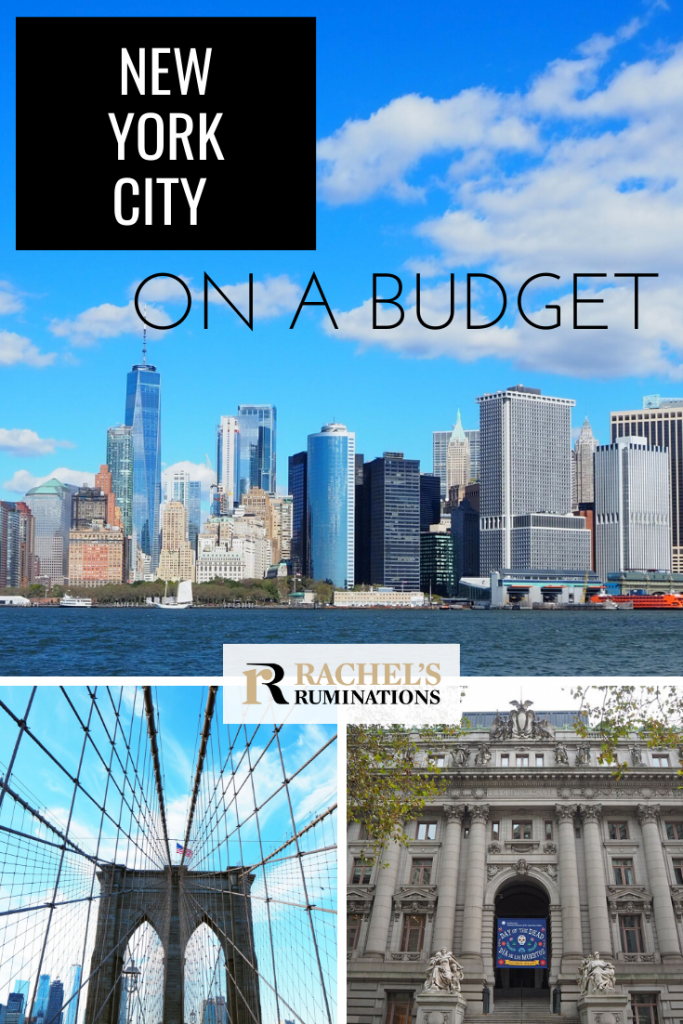
My travel recommendations
Planning travel
- Skyscanner is where I always start my flight searches.
- Booking.com is the company I use most for finding accommodations. If you prefer, Expedia offers more or less the same.
- Discover Cars offers an easy way to compare prices from all of the major car-rental companies in one place.
- Use Viator or GetYourGuide to find walking tours, day tours, airport pickups, city cards, tickets and whatever else you need at your destination.
- Bookmundi is great when you’re looking for a longer tour of a few days to a few weeks, private or with a group, pretty much anywhere in the world. Lots of different tour companies list their tours here, so you can comparison shop.
- GetTransfer is the place to book your airport-to-hotel transfers (and vice-versa). It’s so reassuring to have this all set up and paid for ahead of time, rather than having to make decisions after a long, tiring flight!
- Buy a GoCity Pass when you’re planning to do a lot of sightseeing on a city trip. It can save you a lot on admissions to museums and other attractions in big cities like New York and Amsterdam.
Other travel-related items
- It’s really awkward to have to rely on WIFI when you travel overseas. I’ve tried several e-sim cards, and GigSky’s e-sim was the one that was easiest to activate and use. You buy it through their app and activate it when you need it. Use the code RACHEL10 to get a 10% discount!
- Another option I just recently tried for the first time is a portable wifi modem by WifiCandy. It supports up to 8 devices and you just carry it along in your pocket or bag! If you’re traveling with a family or group, it might end up cheaper to use than an e-sim. Use the code RACHELSRUMINATIONS for a 10% discount.
- I’m a fan of SCOTTeVEST’s jackets and vests because when I wear one, I don’t have to carry a handbag. I feel like all my stuff is safer when I travel because it’s in inside pockets close to my body.
- I use ExpressVPN on my phone and laptop when I travel. It keeps me safe from hackers when I use public or hotel wifi.


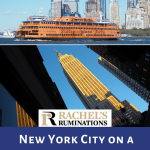
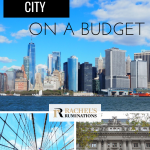
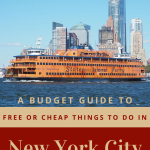
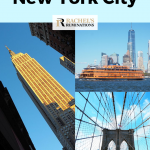
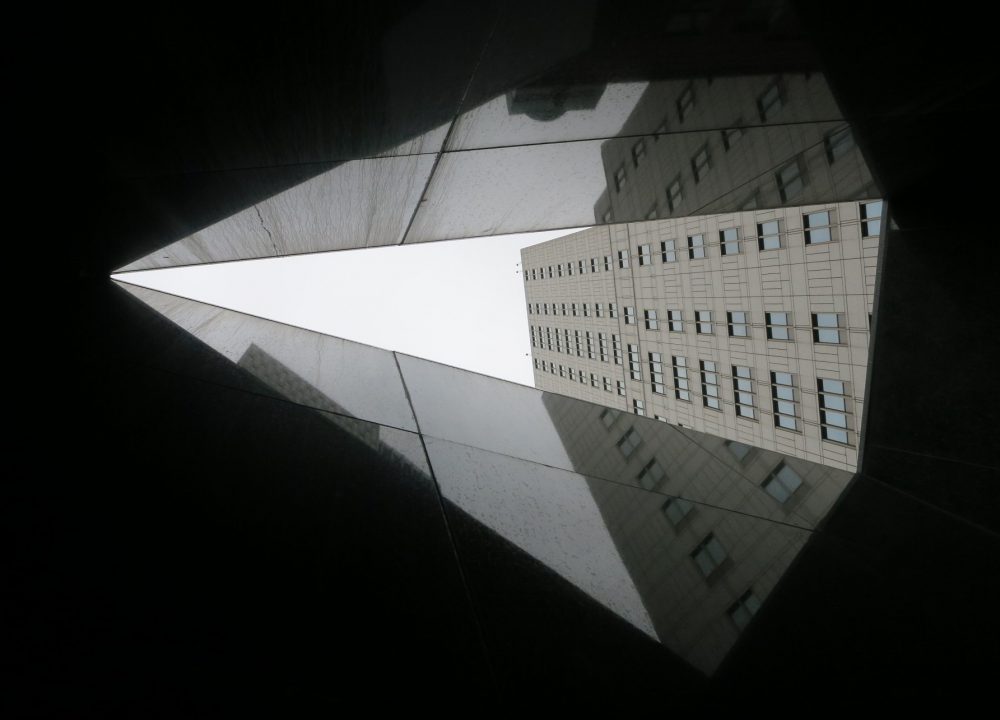
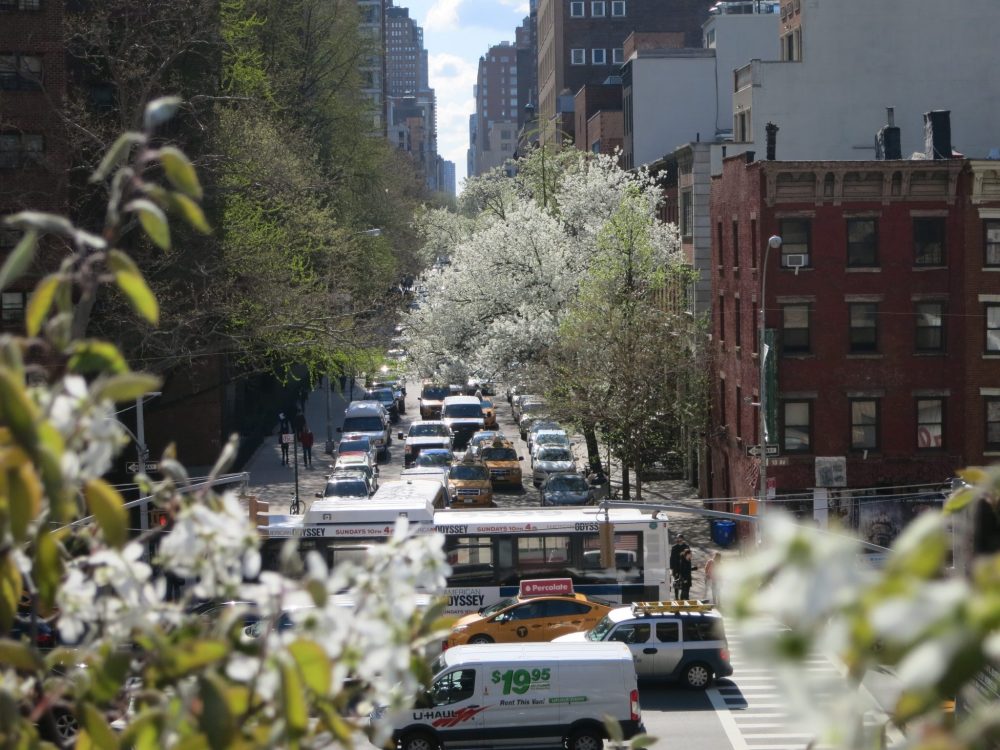
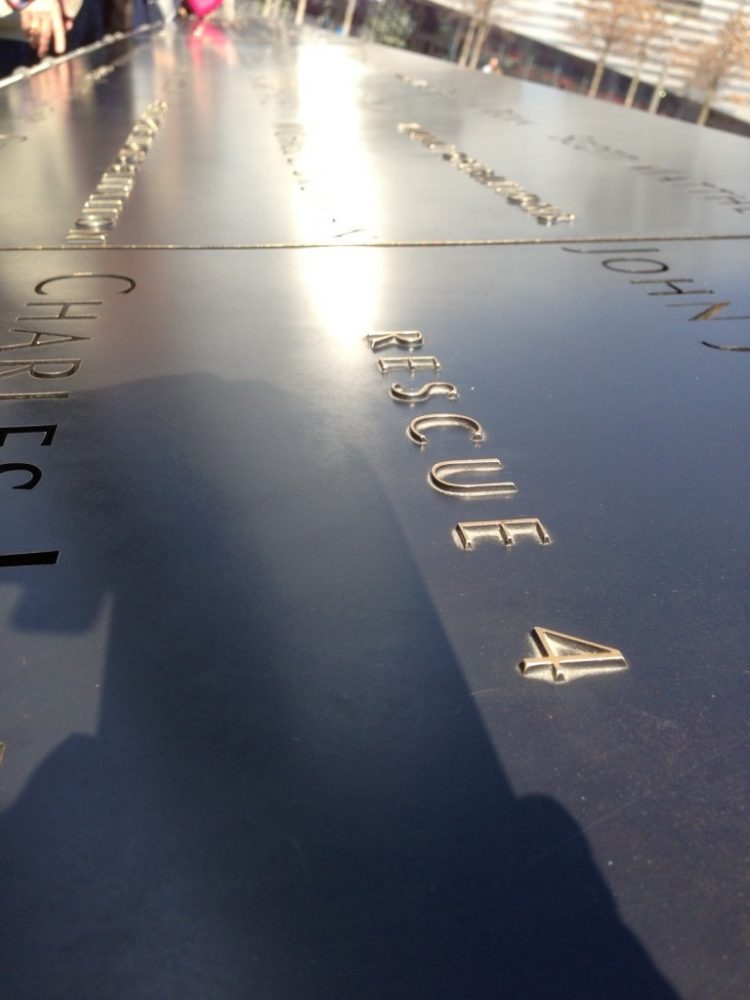
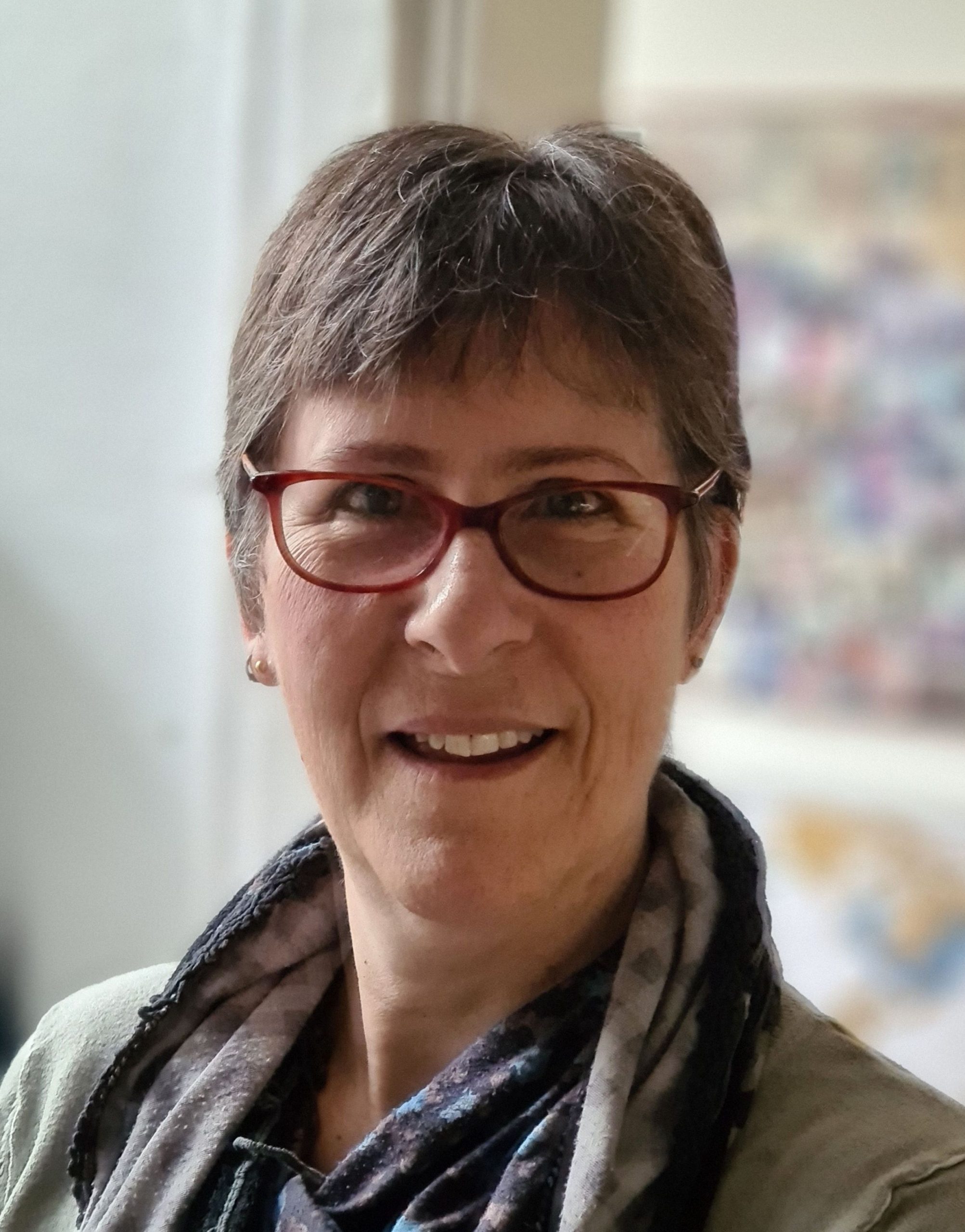
Some great little tips!
Will be useful for when we get there later this year 😉
I hope so! Looking forward to reading your adventures there!
The Brooklyn Heights Promenade is my favorite spot on Earth–the view of the East River, Brooklyn Bridge, and lower Manhattan skyline is amazing! Once you’ve gazed your fill head over to Montague Street in Brooklyn Heights, which won’t be “free” if you go into any of the shops or eateries–in fact they have probably gotten quite expensive lately–but it is a great street to stroll.
Thanks for adding this to the list, David! I’ll try to get over there on my next visit to check out that amazing view!
Rachel, this post of yours will be very helpful when we visit NYC with our kids. We want to take them to the Met which of course wouldn’t fit with this theme, but some of these other suggestions will be worth checking out too.
Once you pay for the Met, you can save money on the rest of the visit… It’s expensive to travel with kids! Especially feeding them!
Thx so much for this post, Rachel! You’ve got an awesome list of tips, many of which we tried on our 1st visit to NYC. I especially recommend the Metro Card. We were there for a week and got the 7-day pass. It was so cheap, and such a super way to get around the city.
So did I. There really shouldn’t be any need to take a taxi when they have such a comprehensive public transportation system.
Hi Rachel,
Great compilation! Congrats!
Bookmarked for future references 😉
cheers
I’m glad you liked it, and I hope it comes in handy!
Great guide! I wouldn’t have known what to do for free or cheap in New York. This will be an excellent reference for whenever I go.
Great post! I love New York and I am such a cheapskate that I will be using these tips on my next visit! I love just walking around the amazing department stores, not buying anything, just looking!
Thanks Tracie and Sally! If either of you comes upon any more free or cheap things to do there when you visit, please let me know to add to the list!
This is quite the comprehensive list of free or cheap things to do in NY! So much has piqued my interest for a future visit, especially the Teddy Roosevelt house! #FeetDoTravel
Yes, I quite liked that one! But that’s the kind of museum I like most: small, uncrowded, and narrowly focused.
I love New York and put together a pocket friendly guide after my last trip. Yours is great too!
Have you posted it on-line? What’s the address?
We’re planning to go to New York this summer, so this is really useful, thanks!
You’re quite welcome! Enjoy! (It’s really hot and humid in the summer, so be prepared, and make sure your hotel has air conditioning!)
I would love to go to New York! There really is no excuse now with your guide! I will refer to this if I ever go 🙂
This is so nice! There is always something free to do in New York. On the budget side, you can do a free tours. It is not entirely free but much cheaper than what other companies offer. In New York, there are 15 or more options. Also, you can do a street art hunt for free (East Village, Soho, Harlem). #feetdotravel
Oh my goodness, I can’t believe I left them out! I’m going to add them right now! Thank you!
I’m really hoping to go back to NYC this year so your tips were very very helpful!!! 🙂
Glad to be of help!
This is a great list of things you can do in NYC that don’t have to cost a fortune!
Great tips and places to see for free or cheap. Wish I had this great list on my last trip to NYC. Love all the museums you mentioned. Pinned this for later us. Thanks for sharing! #feetdotravel
Who want to know what there is to do cheaply or free in NYC! This post suits backpackers, people on a budget, or anyone that just wants to save the extra money to splurge on a show or cocktail – win-win for everyone! Great post, great ideas, thank you so much for sharing! Pinned for when we visit, I will be using this guide! #feetdotravel
Glad you liked it!
I agree about walking and enjoying the architecture – quite a variety of styles especially, as you say, the grand Art Deco buildings. I liked the High Line too. Some great tips here about museums which I’ll bear in mind if I go back to NYC.
What some great tips. I hope to return, and will bookmark this post for that visit. I would have loved it when we visited with Princess Cruises and had two days to see everything! We did lots of walking – lots and lots – and saw a lot, but not as much as you list here.
So much to do! For all of the pricey things about NYC, there are so many free and inexpensive things to do. Can’t wait to get back and enjoy more of them! I think we definitely need to commit a weekend just to the free (and nearly free) museums. #FeetDoTravel
Check the times first: the free days are not on weekends!
Some great tips for seeing the city on the cheap. I’m a big fan of walking and often find not only is it free, but you find loads of places to explore on the way that you more than likey would have missed.
Yes, very true! And you get a glimpse of daily life, while you’re at it.